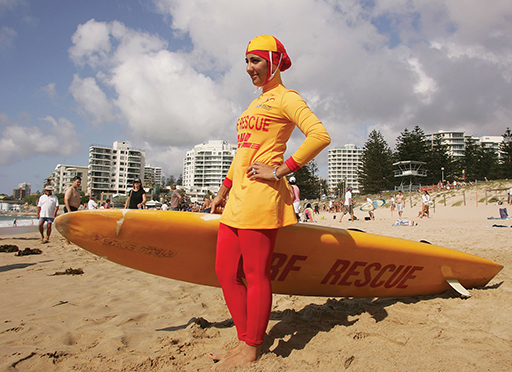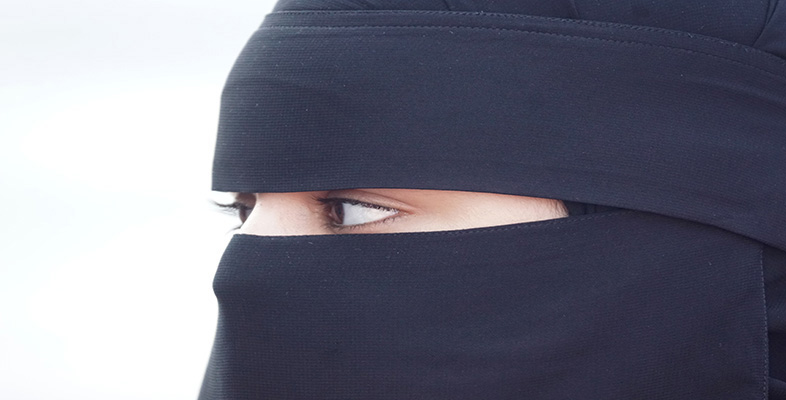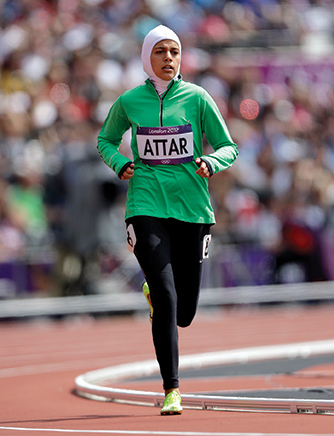3 Hijab in sport and fashion
Hijab in sport
Sport is one of the areas where wearing a hijab can pose a range of practical challenges. These challenges can be linked to the potential physical limitations of modest clothing that might restrict movement or be uncomfortable to wear during strenuous physical exercise. However, these challenges are often also tied to clothing regulations that sporting associations impose and that cannot be reconciled with modest dress codes. In some instances, Muslim women have not been allowed to compete in sporting competitions unless they remove their hijab. An example of such an incident, which caused local, national and international outrage, took place in 2007 and involved an 11-year-old girl who was ejected from a football tournament in Canada on the grounds that her hijab posed a health and safety risk, even though her supporters claimed it was safely tucked in (Adelman, 2011, p. 246). (You might note some parallels here with the Sikh motorcycle helmet controversy discussed in Chapter 1.) In the same year, the international football association FIFA introduced a ban on female players covering their heads, thus effectively excluding the Iranian women’s national football team from international competitions (Khaleeli, 2012).
In an article published in 2010 in the Sociology of Sport Journal, Nisara Jiwani and Geneviève Rail present the findings of their analysis of interviews with young Shi‘a Muslim Canadian women, focusing on how these young women combine their religious beliefs and the practice of wearing a hijab with physical activity, and how they negotiate the practical challenges that a hijab can pose during physical exercise. Jiwani and Rail establish that the majority of their interviewees felt that ‘neither the Islamic religion nor wearing the Hijab [were] barriers to participating in physical activity and some actually [felt] that participating in physical activity [made] them better Muslims’ (2010, p. 261). They come to the conclusion that their interviewees challenged the stereotype of ‘passive’, ‘oppressed’ veiled Muslim women: ‘These young Shi‘a Muslim women do not feel constrained, uneducated, tradition-bound, domestic, or victimized. They rather offer “active” resistance to the usual way in which Western discourses construct brown and/or veiled women and offer a drastically different view of “solutions” to better their lives’ (Jiwani and Rail, 2010, p. 263).

In recent years, the clothing industry has increasingly responded to Muslim women’s desire to find practical solutions that address the difficulties associated with wearing a hijab during physical exercise. This has, for example, led to the development of burqini swimwear (Figure 6) and the sports hijab (Figure 7). The Iranian-born French-Canadian designer Elham Seyed Javad designed the ‘ResportOn’ sports hijab for female Muslim athletes. It is made from antiperspirant fabric and is advertised on the resporton.com website using the tagline ‘Be yourself. Unveil your performance’. While this garment has been bought and used by Muslim women across the world, it has also attracted interest from non-Muslim women and men looking for an effective way of keeping long hair out of their faces during exercise (Qureshi, 2011). A growing number of sporting associations have begun to show greater understanding of modest dress codes and the needs of Muslim women. In 2011 the International Weightlifting Association started to allow female weightlifters to cover their arms and legs, and in 2012 FIFA lifted its ban on headcovers for female footballers (Khaleeli, 2012).

